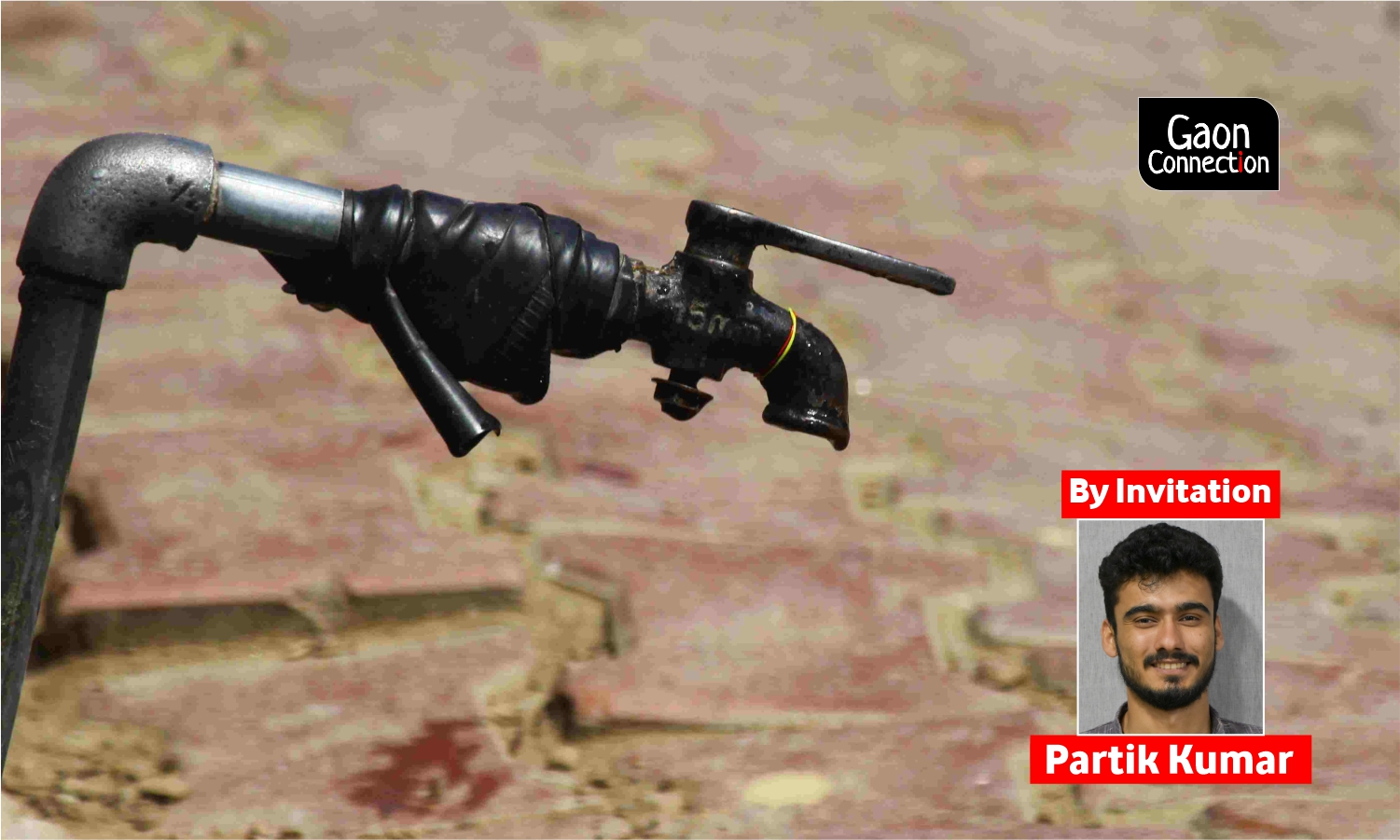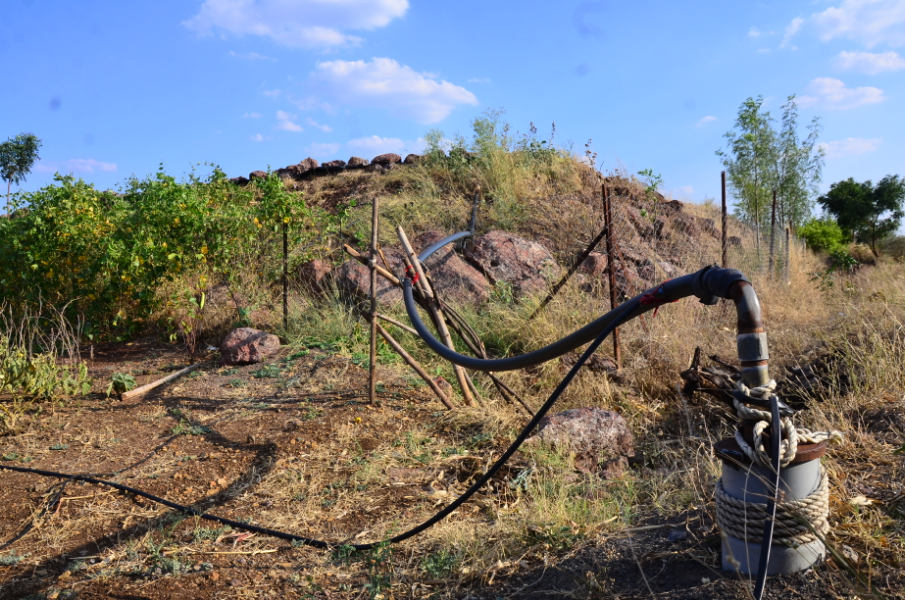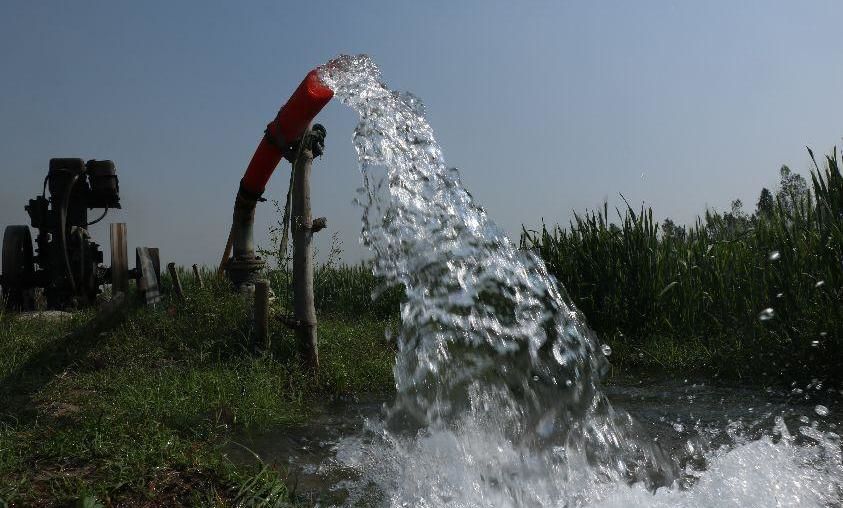A Sinking Feeling: Southwest Haryana in trouble as groundwater levels plunge
With the advent of borewells and pumps, people in southwest Haryana are digging deeper to access water. The region has one of the country's worst cases of groundwater depletion.


Southwest Haryana is today flush with water for its inhabitants, when compared to what it was 50 years ago. The Badhra block here has 54 villages, including Berla, Pichopa Khurd and Karni Dharni, and 118,084 inhabitants. It shares its border with Rajasthan, not too far from the arid Thar desert. Lulled by the easy extraction of groundwater with pumps and borewells, few realise that water may very well run out in this part of the state, says a study. Southwest Haryana has the dubious distinction of being one of the country’s worst cases of groundwater depletion.
“There was a time when we used traditional water wisdom and community management to conserve water. The rains and its runoff were the sole source of water,” 82-year-old Bula Ram of Kari Dharni village told Gaon Connection. Water was stored in a percolation pond or Johad, a community-owned traditional harvested rainwater storage system that is also prevalent in parts of Rajasthan, Punjab and western Uttar Pradesh.
Located 150 kilometres (km) from New Delhi, Badhra block uses up thrice the amount of groundwater than is normal. Which is unusual, because, traditionally, the villages here neither grow water-intensive crops nor are they greatly industrialised or urbanised.
Still, the water table in Badhra block has gone down by 125 feet since 1974, ever since the advent of electricity to rural Haryana, and with it, pumps and borewells. Extracting groundwater became a convenient and simple solution. The relative ease of getting water led to the disappearance of traditional methods of conserving runoff water from the rains. People are reaching down deeper and deeper, to pump out water for their needs.

Water wisdom
In the past, before the days of borewells, the johad filled up with the runoff water in the monsoons. The community ensured that the water body was desilted annually, and embankments were in good repair. These ponds supplied water for domestic and livestock needs, and also recharged the groundwater. But over the years, with borewells making an entry, the johads lost their importance as a source of water, were neglected and often abandoned.
As groundwater became easier to access, there was a change in the way people moved and lived. Water now came from borewells instead of the johads, communities that traditionally took care of them disappeared, there was encroachment in the pond area and domestic waste began to be dumped into them.
According to a study by the Indian Institute of Technology, Kharagpur, the region has a reserve of rich alluvial aquifers that have a very long life. The water in these deep aquifers may go back a thousand years. But there is a very real and present danger of this water disappearing altogether.
“We know that someday the groundwater will be over, as it’s not infinite, but few of us know that its repletion will take hundreds of more years,” Ramphal Sangwan, a farmer of Bilawal village, told Gaon Connection. He hoped that in the meanwhile, the government would take measures to artificially recharge the groundwater and do something about spreading awareness on the matter as well.

A unique problem
While in the rest of water-strapped Haryana, the issue has been addressed with technological interventions and there has been a measure of success, they have not yielded the same results in southwest Haryana.
One of the reasons could be that in this part, the habitation is scattered rather than clustered. Eighty two per cent of families having more than one hectare of land live in individual farms, and not in village clusters. This scattered habitation pattern had hindered collective action in the management of water resources.
Easy accessibility to water, thanks to the borewells, has also led to intensive agriculture and 90 per cent of the net sown area that was once fully rainfed 50 years ago is now irrigated. Also, rabi crop like gram that is drought-resistant and does not need too much water, has been mostly replaced by wheat and mustard. Also, instead of native varieties, farmers prefer to grow hybrid and improved varieties with better yields.
Because of the lay of the land, micro-irrigation practices have taken over. Sprinklers, micro-sprinklers and drip technology have been introduced. While this has led to an improvement in the lifestyles of the farming families in the region, enabling them to meet the very high cost of groundwater extraction, it has had a devastating impact on groundwater levels.

Ground (water) reality
In his memoirs, Life in the IAS: My Encounters with the Three Lals of Haryana, Ram Verma, former state chief secretary, describes southwest Haryana as being prone to chronic drought. It is not uncommon for women to walk long distances to fetch water and there is a lot of poverty.
It is significant that three chief ministers of Haryana have come from this part of the state. In 1968, Bansi Lal from Golagarh village in southwest Haryana became the first full-term chief minister. It was he who famously declared that he would bring the waters of the Yamuna (that flows 250 km away) to southwestern Haryana. It was easier said than done because this region has an undulating topography, making it difficult for canals to be dug.
But political will and technocratic dedication led to the construction of the Jawahar Lal Nehru (JLN) lift canal system here, one of the world’s biggest lift irrigation systems constructed by the chief engineer KS Pathak, who took inspiration from Tennessee Valley Authority projects in the USA.
However the lift irrigation did not work to its potential due to topographic constraints, failure of the Satluj Yamuna Link (SYL) canal and the high cost of running and maintaining the multistage lift pumps required to pump the water. The SYL canal was supposed to bring 3.5 Million Acre Feet water from Satluj-Ravi-Beas basin. But the lift irrigation system worked with some efficiency only during the monsoons and became a challenge to run.

Unique problem needing a unique solution
It is not possible to view southwest Haryana through the same lens as the rest of the state. say experts. The region is extremely arid, the water is from a single source, and the groundwater’s hydrogeological composition is complex.
While Haryana and Punjab are facing groundwater depletion and are in constant parleys to deal with that, south west Haryana does not figure in its ambit. Most parts of Haryana and Punjab are facing water crisis due to altered cropping patterns, monocropping, cultivating highly water-intensive crops and poor irrigation practices. On the other hand, southwest Haryana’s woes stem from its unique topographical and human geography characterisation, scanty rainfall, single-source dependency and complete absence of community institutions.
The various interventions to combat water crises in Punjab and the rest of Haryana also do not hold good for south west Haryana. Under the national irrigation programme, Pradhan Mantri Krishi Sinchai Yojana, the government is focussing on Haar Khet ko Paani (water for every farm through catchment area development, and ‘more crop per drop’ (micro irrigation).
In southwest Haryana, irrigation through surface water (canals) is near impossible, rendering the Haar Khet ko Paani activities null and void. Similarly the ‘more crop per drop’ initiative is ineffective here as south west Haryana is completely under the micro irrigation practice.
Though the government is also making efforts to rejuvenate traditional water bodies, it is only focussing on desilting. In south west Haryana, the hydrogeology, community participation and effective source of water to the johaad need to be taken into account.
In the meanwhile, the region is getting by with intensive water extraction. The question that begs to be asked is, how much longer till the water sources dry up completely.
In the span of 50 years, this region moved from being severely water deficient to being more than comfortable. But now if the matter of groundwater depletion is not looked at and addressed scientifically, with institutional intervention, the region may slide back half a century and into water-starvation again.
“There was a time when people were reluctant to give their daughters in marriage into communities in this region. Then things looked up and our children are now well educated and earn handsomely. But, it may not be too long before the looming water crisis resurfaces and no one will want to wed into our villages again,” Reshma Devi, an 82-year-old resident of Badhra block, lamented to Gaon Connection.

